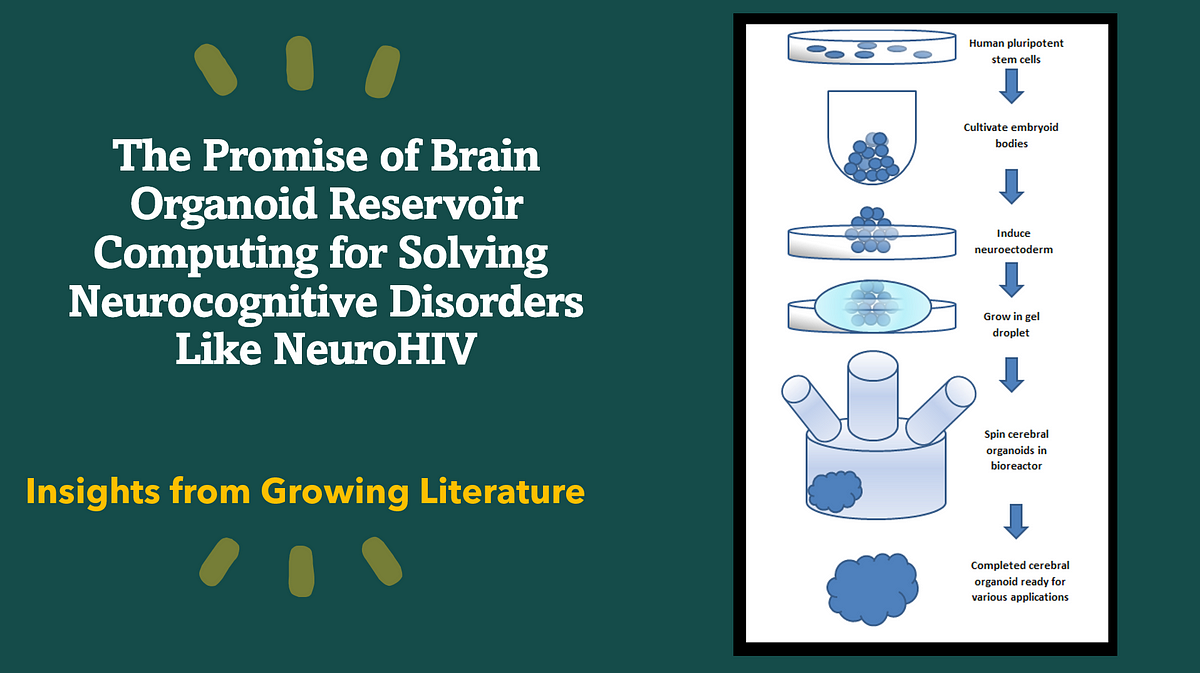Neurocomputing: Brain Organoid Reservoir Computing for NeuroHIV & Cognitive Disorders
Conceitos essenciais
Cerebral organoids using reservoir computing offer hope in solving neurocognitive disorders, with a focus on addressing neuroHIV complications.
Resumo
The content delves into the intersection of neuroscience and computing through the development of cerebral organoids. It highlights the potential of brain organoid reservoir computing in tackling neurocognitive disorders, specifically focusing on neuroHIV complications. The author shares personal insights and experiences in exploring this emerging field.
- Introduction to Neurocomputing and Brain Organoid Reservoir Computing.
- Significance of blending neuroscience and computing in understanding brain functionality.
- Application of cerebral organoids in addressing neurocognitive disorders.
- Focus on neuroHIV as an emerging case study for neurological complications related to HIV infection.
Customize Summary
Rewrite with AI
Generate Citations
Translate Source
To Another Language
Generate MindMap
from source content
Visit Source
medium.com
Neurocomputing: Brain Organoid Reservoir Computing Brings Hope to Solving NeuroHIV & Cognitive…
Estatísticas
"This flow chart outlines the basic steps to create a cerebral organoid. The process takes a span of months and the size of the organoid is limited to the availability of nutrients."
Citações
"As an emerging field, neurocomputing has been an exciting adventure for me as I study human and artificial intelligence for personal and professional purposes."
"These tiny structures, recently highlighted in Nature, blend neuroscience and computing. They offer new ways to understand how our brains work and how we can use that knowledge to build more intelligent machines."
Principais Insights Extraídos De
by Dr Mehmet Yi... às medium.com 03-24-2024
https://medium.com/illumination/neurocomputing-the-potential-of-brain-organoid-reservoir-computing-for-solving-neurohiv-cf488c917190
Perguntas Mais Profundas
How can advancements in brain organoid reservoir computing impact other areas of healthcare?
Advancements in brain organoid reservoir computing have the potential to revolutionize various areas of healthcare. By utilizing cerebral organoids, researchers can model complex neural networks and study neurological diseases with unprecedented accuracy. This technology opens up new possibilities for drug discovery, personalized medicine, and understanding the underlying mechanisms of various disorders such as Alzheimer's disease, Parkinson's disease, and epilepsy. Furthermore, the insights gained from studying brain organoids can lead to more effective treatments and interventions for a wide range of neurological conditions.
What are potential ethical considerations surrounding the use of cerebral organoids in research?
The use of cerebral organoids in research raises important ethical considerations that must be carefully addressed. One key concern is the creation and manipulation of mini-brains that possess some level of consciousness or sentience. Researchers must ensure that these organoids are not capable of experiencing pain or suffering during experimentation. Additionally, there are concerns about consent and privacy when using human-derived cells to create brain-like structures. It is essential to establish clear guidelines for obtaining informed consent from donors and protecting their personal information.
How might understanding neuroHIV through this technology contribute to broader insights into cognitive disorders?
Studying neuroHIV through brain organoid reservoir computing offers a unique opportunity to gain deeper insights into both HIV-related neurological complications and broader cognitive disorders. By modeling the effects of HIV infection on neural networks using cerebral organoids, researchers can uncover novel mechanisms underlying neurocognitive impairments associated with the virus. These findings may not only improve our understanding of how HIV affects the brain but also shed light on common pathways shared by different cognitive disorders. Ultimately, this knowledge could pave the way for innovative therapeutic strategies targeting cognitive deficits across various conditions.
0
